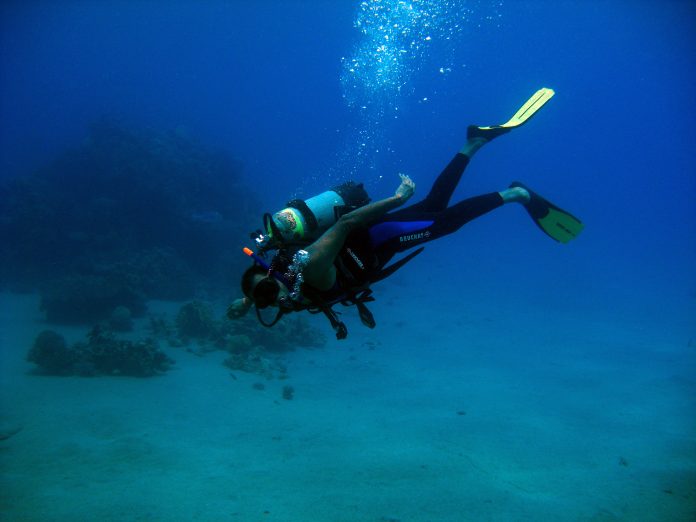Certain jobs, like deep sea diving, bring an element of risk with them: in what sectors has technology made dangerous jobs safer?
Whether it’s pressure on the body due to deep sea diving, or the risk of falling from a height as a tree surgeon, the risks can be huge.
However, thanks to technology, even the world’s most dangerous jobs are becoming a safer trade to be in. In this article, Hire Torque look at how certain roles are becoming safer thanks to technological advances.
Taxi driver
While this may not be the first role that springs to mind when you think of dangerous jobs, it certainly has its moments. Recently, a taxi driver in Kent had to jump from his cab after two passengers doused it with petrol and set it alight following a night out. It was also confirmed by a CDC report in 2017 that taxi drivers, as well as limousine drivers, are the most likely workers to suffer a violent death due to the fact they work alone in unsociable hours and deal with cash.
taxi drivers, as well as limousine drivers, are the most likely workers to suffer a violent death due to the fact they work alone
However, while apps such as Uber are thought to benefit passenger safety, with cars constantly tracked, it has also worked to help keep the drivers safer too. This is because you can flip the scenario on its head – while a driver’s details are saved, so too are the passenger’s. Also, by making it an automatic card payment, the driver doesn’t deal with any cash, meaning thieves can’t target their vehicle. This payment option is now becoming standard across taxi firms who have started using an app for their bookings, too.
Electrical power-line installers and repairers
This role brings an obvious risk – installers and repairers are constantly dealing with high-voltage wires at a height. Whether it involves climbing or using helicopters to inspect power lines, there is a risk of death on many levels. However, many companies are now providing employees with drones in their tool kit. Using these devices allows the worker to simply send the drone up and see what assets require repairing from the ground and without the need to scale the heights. This, alongside UAVs with the right sensors, allow you to detect any damaged wires that previously would have been hidden.
Roofer
Roofing companies are quickly becoming one of the most popular users of unmanned aircraft. It’s a job that almost everyone requires at some point, but people don’t really understand the dangers involved. It’s very physically and intellectually demanding – there’s always a risk you may fall if you climb up onto a roof. Add in the fact that the reason you’re probably up there in the first place is because it’s unsafe and you sharp get the picture. In the United Sates, there are approximately 34.7 deaths per 100,000 roofers.
Thanks to drones and other unmanned aircraft, this risk is removed as you don’t physically have to climb up onto the roof. Not only is this safer, but it can significantly speed up the reviewing process. A great example of this is when Belfast’s Primark caught fire. With the building very unstable and still on fire, a drone was sent up to assess the damage before a human would have been able to.
In the United Sates, there are approximately 34.7 deaths per 100,000 roofers.
Deep sea saturation diver
The role of a deep sea saturation diver carries obvious risks. It’s a dangerous job and you can be killed due to the environment you’re working in. The role carries a huge neurological risk long term as divers report more symptoms regarding their nervous system, with concentration difficulties and paraesthesia in hands and feet common.
Thanks to technological advances, remotely operated vehicles (ROVs) can be controlled by pilots above sea level from the support ship. These unmanned robots can allow scientists access to real time video transmission at greater depths and remove the need to dive into the sea. The advantages that are notable from these ROVs is that there are reduced human risks, affordable technology and can be deployed even in harsh environments.
Fisherman
A commercial fisherman runs the risk of colliding with Mother Nature. In years gone by, this used to come as a surprise, but thanks to technology, crews of fishermen are able to anticipate such bad weather and fully prepare for it. While this is the case, 200 fishermen in every 100,000 were said to lose their lives in the United States in 2011. A good GPS system is crucial so that your location is always known and you’re also aware of where you’re heading. This will help you avoid any treacherous areas, while also allowing people to quickly find you in case of an emergency.
200 fishermen in every 100,000 were said to lose their lives in the United States in 2011
It’s not just the weather that they have to battle, either. With a small vessel full of dangerous equipment, including chains and sharp objects, workers in this trade must keep their wits about them at all times. This can also include the risk of electrocution due to tangled wires overhead.
While the risks will never be completely eradicated, it’s clear that technology is providing an element of safety for even the most dangerous of roles.
What will the next development be?
Sources
https://www.dailymail.co.uk/health/article-4904386/Taxi-drivers-likely-workers-die-violent-death.html
https://www.mirror.co.uk/news/uk-news/terrified-cabbie-flees-taxi-after-13739336
https://www.linkedin.com/pulse/making-most-dangerous-jobs-safer-james-mackler/
https://www.theguardian.com/careers/careers-blog/under-pressure-job-deep-sea-diver
https://www.ncbi.nlm.nih.gov/pmc/articles/PMC1035367/
https://www.theguardian.com/careers/careers-blog/under-pressure-job-deep-sea-diver
http://www.deepseawaters.com/deep_sea_technology.htm











